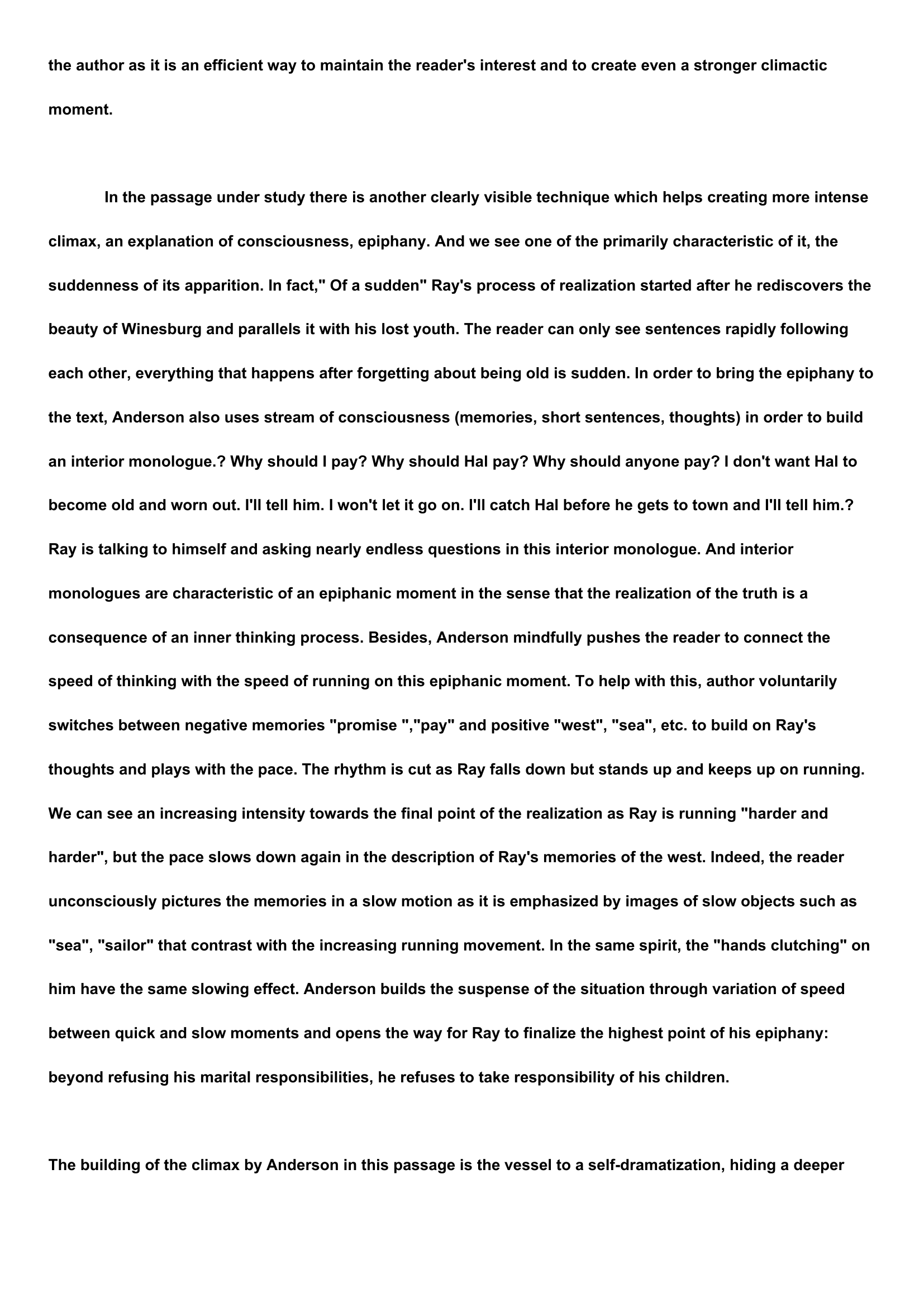Analyse Untold lie Winesburg Ohio
Publié le 12/05/2020

Extrait du document


«
the author as it is an efficient way to maintain the reader's interest and to create even a stronger climactic
moment.
In the passage under study there is another clearly visible technique which helps creating more intense
climax, an explanation of consciousness, epiphany.
And we see one of the primarily characteristic of it, the
suddenness of its apparition.
In fact," Of a sudden" Ray's process of realization started after he rediscovers the
beauty of Winesburg and parallels it with his lost youth.
The reader can only see sentences rapidly following
each other, everything that happens after forgetting about being old is sudden.
In order to bring the epiphany to
the text, Anderson also uses stream of consciousness (memories, short sentences, thoughts) in order to build
an interior monologue.? Why should I pay? Why should Hal pay? Why should anyone pay? I don't want Hal to
become old and worn out.
I'll tell him.
I won't let it go on.
I'll catch Hal before he gets to town and I'll tell him.?
Ray is talking to himself and asking nearly endless questions in this interior monologue.
And interior
monologues are characteristic of an epiphanic moment in the sense that the realization of the truth is a
consequence of an inner thinking process.
Besides, Anderson mindfully pushes the reader to connect the
speed of thinking with the speed of running on this epiphanic moment.
To help with this, author voluntarily
switches between negative memories "promise ","pay" and positive "west", "sea", etc.
to build on Ray's
thoughts and plays with the pace.
The rhythm is cut as Ray falls down but stands up and keeps up on running.
We can see an increasing intensity towards the final point of the realization as Ray is running "harder and
harder", but the pace slows down again in the description of Ray's memories of the west.
Indeed, the reader
unconsciously pictures the memories in a slow motion as it is emphasized by images of slow objects such as
"sea", "sailor" that contrast with the increasing running movement.
In the same spirit, the "hands clutching" on
him have the same slowing effect.
Anderson builds the suspense of the situation through variation of speed
between quick and slow moments and opens the way for Ray to finalize the highest point of his epiphany:
beyond refusing his marital responsibilities, he refuses to take responsibility of his children.
The building of the climax by Anderson in this passage is the vessel to a self-dramatization, hiding a deeper.
»
↓↓↓ APERÇU DU DOCUMENT ↓↓↓
Liens utiles
- WINESBURG—SUR-01110 Winesburg, Ohio].
- analyse linéaire Les caractères Giton et Phédon
- Analyse "Pensées pour soi" de Marc Aurèle
- analyse linéraire pour l'oral du bac sur le text liminaire de l'épitre dédicatoire de Louise Labé
- ANALYSE LINEAIRE ELLE ETAIT DECHAUSSE

































